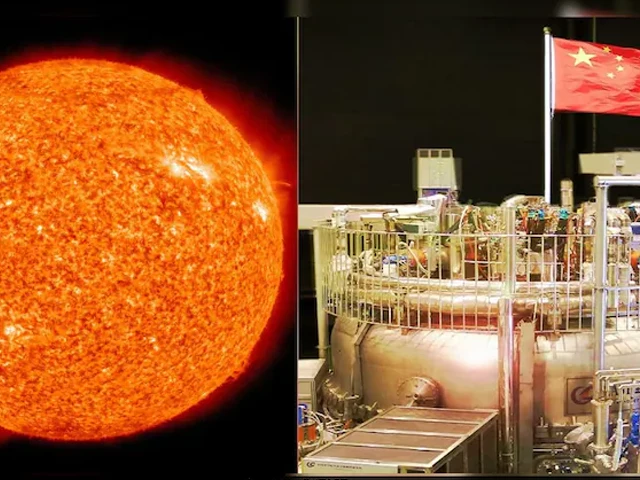China's ‘Artificial Sun’ sets historic 17-minute Plasma record in Fusion experiment
This surpasses the previous record of 403 seconds, marking a major step forward in fusion energy development.

China has made significant progress in its quest for a new, cleaner energy source by conducting a groundbreaking nuclear fusion experiment.
The Experimental Advanced Superconducting Tokamak (EAST), often referred to as China’s 'artificial sun,' successfully sustained plasma for a record 1,000 seconds, or over 17 minutes.
This surpasses the previous record of 403 seconds set in 2023, marking a major step forward in fusion energy development.
Nuclear fusion, the process that powers the sun, has long been considered the "holy grail" of energy production.
Unlike nuclear fission, fusion involves the merging of atomic nuclei to produce vast amounts of energy, with no greenhouse gas emissions and a lower risk of accidents. Achieving long-term stability and reaching temperatures over 100 million degrees Celsius has been a major challenge for scientists.
However, by stabilizing the plasma for 1,000 seconds, or more than 17 minutes, Chinese researchers believe they have reached a crucial milestone in the development of fusion technology.
Song Yuntao, director of the Institute of Plasma Physics at the Chinese Academy of Sciences, emphasized the significance of the achievement, noting that "a fusion device must achieve stable operation at high efficiency for thousands of seconds to enable the self-sustaining circulation of plasma, which is critical for continuous power generation."
He also expressed hopes for expanding international collaboration in the pursuit of practical fusion energy solutions.
While the EAST reactor has not yet reached "ignition"—the point at which nuclear fusion creates its own energy and sustains the reactions—the recent record demonstrates significant progress in maintaining stable, confined plasma loops, a key factor for the development of future fusion reactors.
EAST, operational since 2006, has undergone numerous tests, with the latest achievement providing renewed optimism for fusion's future.
Building on this success, China is already constructing new experimental fusion research facilities in Anhui Province to further advance fusion energy technology.
The promise of nuclear fusion as a near-unlimited, clean energy source has inspired global interest. If perfected, it could help address the ongoing energy crisis, reduce reliance on fossil fuels, and power humanity’s exploration beyond our solar system.
Scientists and engineers are hopeful that fusion energy will ultimately play a critical role in shaping the future of energy production.




















COMMENTS (1)
Comments are moderated and generally will be posted if they are on-topic and not abusive.
For more information, please see our Comments FAQ